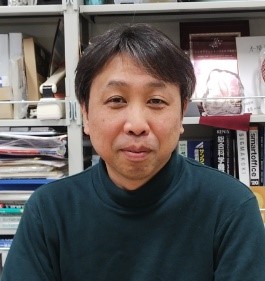He received his PhD from Nagaoka University of Technology in 2004. He then worked as a researcher at Mitsubishi Electric Corporation, and since 2007, he has been engaged in research on glass ceramics as an assistant professor at Nagaoka University of Technology. He was promoted to Associate Professor in 2014 and to Professor in 2023. He is working on the creation of ionic conductors and all-solid-state batteries with oxide glasses and glass-ceramics.
Sodium ion conductive glass-ceramics processed by laser-based powder bed fusion technology
Oxide all-solid-state sodium batteries (Na-ASSB) are expected to be one of the candidates for next-generation secondary batteries because they do not depend on scarce resources and are composed of non-flammable materials. Na3Zr2Si2PO12 (NZSP) is well known as a sodium superionic conductor (NASICON) structure crystal. By tuning the sintering process, NZSP exhibits superior sodium ion conductivity of 1 mScm-1 at room temperature. However, improving the ionic conductivity of NZSP by the usual solid-state reaction process requires long heat treatment, and the grain boundary resistance governs its ionic conductivity. Therefore, it is important to synthesize solid electrolytes that combine densification and ionic conductivity. This study proposes laser processing to prepare NZSP film without conventional sintering. Laser light enables the formation of a melt-pool, and solidification will be achieved. Morphology, crystallinity, and ionic conduction in the laser-induced layer were investigated.
NZSP was prepared using the sol-gel process and conventional heat treatment. 5wt% of acetylene black was added to NZSP as a laser light absorbent. A nano-second pulse laser with a 1064nm wavelength was irradiated on the surface of compact powder.
Cross-sectional SEM image of laser-irradiated 5wt%AB added NZSP via scanning electron microscope show that the depth of 20 m from the surface is found to be melt-solidified. Powder X-ray diffraction and differential thermal analysis showed that the melt-solidified region was found to be amorphous. When the amorphous NZSP was heat-treated again at 1000°C for 10h, the NZSP recrystallized while retaining its high-density morphology. Impedance spectra of NZSP immediately after laser irradiation and after recrystallization shows that the crystalline NZSP shows higher ionic conductivity than the amorphous state. It is also noteworthy that it is possible to separate self-supporting NZSP sheets from the powder compact, as is done with 3D printing technology via the powder bed fusion process.

Nagaoka University of Technology
Address: Kamitomioka-cho 1603-1, Nagaoka, 940-2188, Japan
Email: honma@mst.nagaokaut.ac.jp
